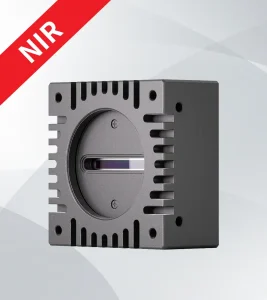Some of the most important features to look for when choosing industrial cameras are needed to enable them perfect functioning and suitability with respect to typical application requirements. One of these is the resolution aspect. For example, you will find Basler cameras with resolutions up to 24 megapixels that are necessary for all uses demanding the most detailed images - like quality control in manufacturing. Cameras with higher resolutions are able to produce clearer and more precise images which is important for identifying small defects or subtle image details.
Then there is the frame rate, which also matters a lot Yes, FLIR Systems makes high-speed cameras that can record 1,000 frames per second. If the process being recorded is very fast, such as blister formation on skin (in research and development) or critical analysis of athletic performance in competition that humans are not capable of doing themselves at a higher frame rate then it becomes necessary. This is vital for fine control over the onset and offset of faster events that current frame rates cannot capture.
The type of sensor used in the industrial cameras also has a big influence on performance. They posited that Sony's CCD and CMOS sensors each had its strengths. CCD sensors are famous to provide high-quality images and low noise whereas CMOS image sensors offer faster readouts and consume less power. Which sensor to use depends on application-specific need (image quality versus speed).
One other equally important determining factor: connectivity options. Cognex industrial cameras feature interfaces such as GigE Vision or USB 3.0 to enable fast data transfer and easy integration with other systems. Proper connectivity enables smooth communication between the camera and processing units, which increases system precision.

Apart from the same, creating them durable and eco-friendly is also important. Hikvision cameras are designed to withstand harsh environments with a rugged construction up to an IP67 rating. All are important because we look at yards, or the size of them. This is very useful in those cameras that meet with approval against dust and moisture (what happens during our third test when pictures are taken outdoors).
The image processing capabilities is an important factor, which can impact the realization of industrial cameras. Streamlined functions in the camera such as real-time image processing and onboard algorithms by companies like JAI allow cameras to efficiently manage sophisticated tasks including object recognition or defect detection without requiring additional external processors.
Thus, cost efficiency is a primary requirement. Industrial cameras can cost from a few hundred to several thousand dollars depending on features and specifications. Prices vary from about $1,500 to as much as $2,000 for very high-resolution cameras capable of shooting at up to 300 frames per second with extended dynamic range and rugged construction while some more basic models are priced under $500.
In conclusion, the criteria concerning resolution, frame rate as well as sensor type of industrial cameras are mentioned but there a lot more you need to have on your checklist such connectivity,Durability —Image Processing -and cost. These features greatly affect the camera, in general and its suitability towards various applications from industrial prospective which also determines how efficient it is. For more details and offer specifications go to industrial cameras